Ízletes vargánya
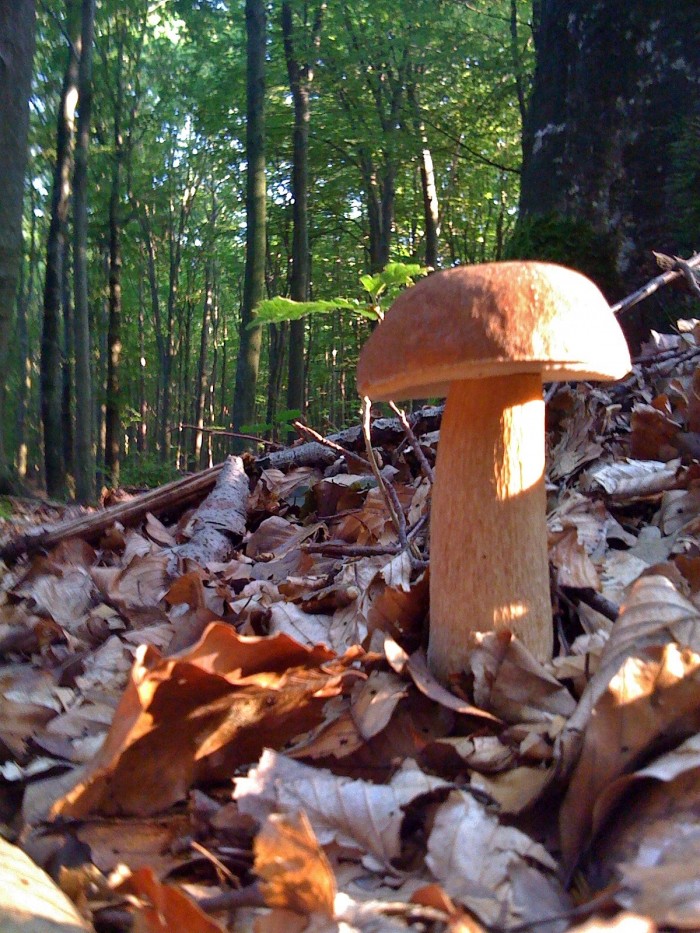
Az őrségi erdők vitán felül állóan legkedveltebb gomba faja. Május végétől október közepéig szedhető. A csapadékos időszakot követő napsütéses, párás, felmelegedő idő csalogatja elő. Ilyenkor nem csak az erdei utak, de a főútvonalak erdei részei is már kora hajnalban feltelnek autókkal. A legelszántabbak még sötétben elindulnak a keresésére, sok-sok kilométert legyalogolnak utána, és mire az átlagos gombaszedő kiér az erdőre, ők már teli kosárral és nagyon boldogan indulnak hazafelé. Pontos helymegjelölést már csak az ő kedvükért sem teszünk! Legyen elég annyi, hogy a vargánya leggyakoribb termőhelyei a tölgyesek , gyertyánosok , szelíd gesztenyések, de kedveli a gyorsan melegedő erdőszéleket, tisztásokat is. Kalapja gesztenyebarna színű, fehér peremű és húsos, átmérője a 12-25 cm-t is eléri. Súlya az 1 kg-ot is meghaladhatja! Fiatalon halvány, később zöldessárga spóratermő rétege csöves szerkezetű , a kalapról könnyen lefejthető. Tönkje, akár 15 cm magasra is megnő, vörösesbarna, csíkos, felső részén finom, fehér hálózat található. Sokféleképpen elkészíthető: nyersen salátákba, gombalevesnek, vajban párolva köretnek. Legtöbben talán mégis rántva szeretik, de pörköltnek is kiváló. Szárítás és őrlést követően fűszerként is nagyon sok ételhez használják.
Boletus edulis
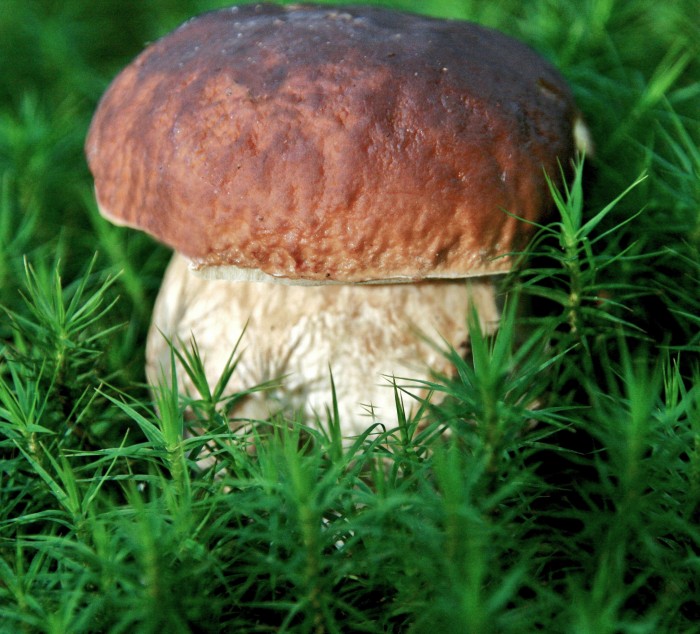
lt is undoubtedly the best-loved and most favourite species of fungus in the woodlands of the Őrség region. lts growing season is from the end of May till the middle of October. lt is the sunny, humid and warmer weather following the rainy periods that urges these fungi to appear. At these times not only the forest paths, but also the forest sections of main roads are full of cars already at dawn. lt is still dark, when the most resolute mushroom gatherers start searching, walking many kilometres to find mushrooms and by the time the average gatherers arrive at the forest, their baskets are already full and they happily leave the forest for home. Respecting their searching spirit and resolution, we shall not disclose the exact locations of the best places! Suffice it to say that the most frequent growing areas of boletus edulis are oak, hornbeam and sweet chestnut forests, but this species of fungus also likes edges of forests and forest clearings that warm up quickly. The cap of this fungus has a chestnut brown colour with a white edge all around and is meaty. lts diameter can be 12-25 cm, and its weight can exceed 1kg! Whenyoung, it has a pale hue, later it becomes greenish yellow and its spore production layer consists of tubes that can easily be removed from the cap. The stipe can grow as high as 15 cm, it is reddish brown, striped, with a delicate whitepattern on the upper portion. lt can be used in various ways: you can eat it raw in salads, or use it in mushroom soups, but it can also be sautéed in butter and served as a garnish. However, most people like it dipped in eggs and breadcrumbs and then fried in oil, but it is also excellent as a stew. After drying and grinding it can also be usedas a spice and added to many different dishes.
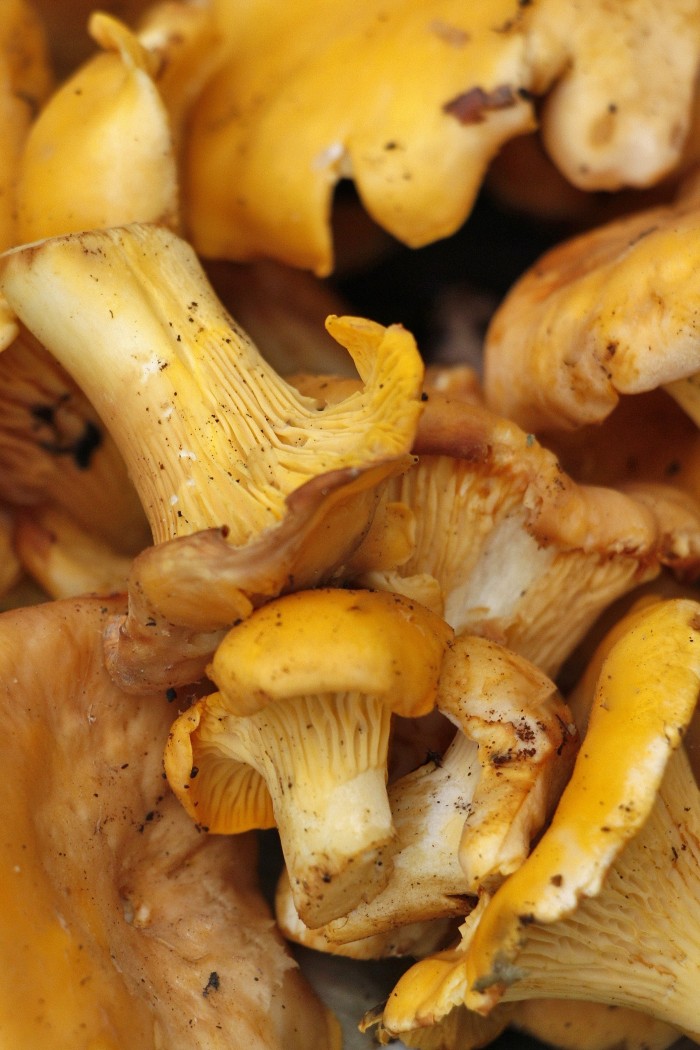
A sárga rókagomba őrségi nevén „nyulica” – nyáron és kora ősszel jelenik meg a meleg, esős időszakokban erdőtalajon, különösen a sűrű, sötétebb bükk erdőkben és tölgyesekben. Tölcsér alakú, de szabálytalan, kalapszerűen kiszélesedő felső része fodros szélű. Közepes termetű gomba. Színe sárga vagy világosabb, főleg a bükkösben termett példányok sárgásfehérek. Közkedvelt, kitűnő, jól ismert ehető gomba.
The yellow chanterelle or „nyulica”, as it is called in the Őrség region – can be seen in warm and rainy periods on forest grounds, especially in dense and dark beech and oak forests in the summer and in early autumn. lts irregular funnel-shaped upper part bulging out like a hat has awavy edge. lt is a medium-sized mushroom. lts colour is yellow or lighter, especially the samples growing in beech woods are yellowish-white. lt is a widely popular, excellent and well-known edible species of fungus.
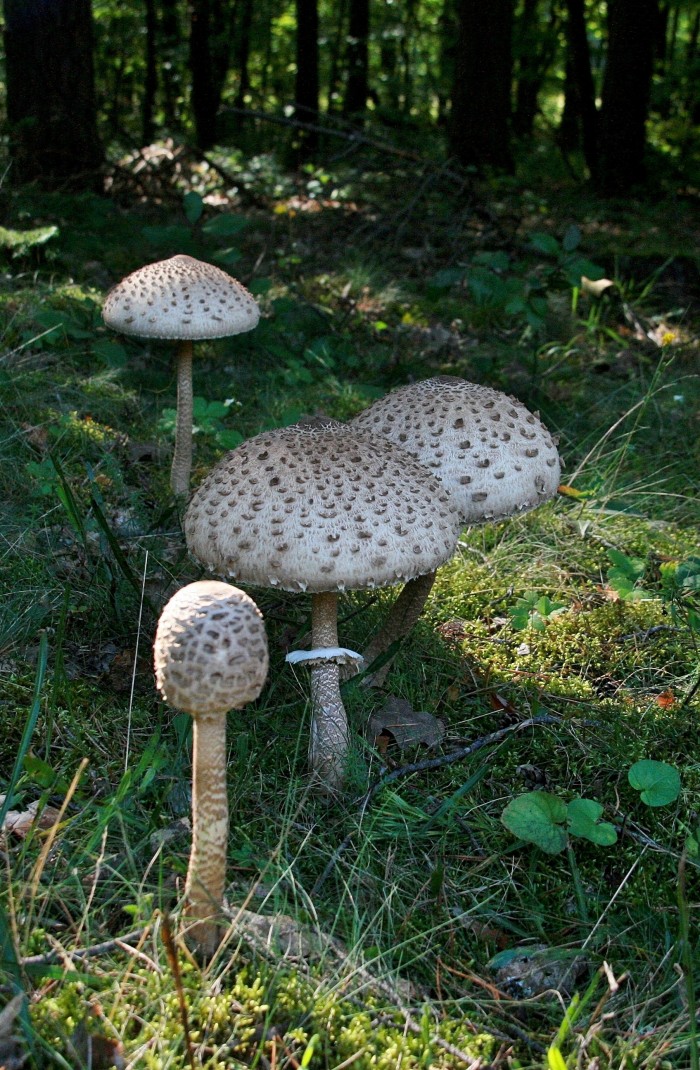
A nagy őzlábgomba nagytermetű, feltűnő megjelenésű. Lomb- és fenyőerdőben egyaránt megterem, különösen füves, ritkás, ligetes erdőben, akácosban, bokros helyeken, erdőszéleken. Nyár elejétől késő őszig terem, különösen kora ősszel igen gyakori. Csak a kalapja fogyasztható, mivel a tönk húsa kemény, rostos. Kalapja fiatalon tojásdad, később esernyőszerűen kiterülő, középen csúcsos púppal, 10-30 cm nagyra nő. Levesnek, rántva, sütve vagy más gombás ételnek egyaránt kitűnő. Fiatalon egyike a legjobb csemegegombáknak, eléggé állóképes és ritkán kukacos.
The large parasol mushroom has a large size and a striking appearance. lt grows in both deciduous and coniterous forests, especially in grassy, sparsely grown, grove-like woods, in acacia woods, bushy places, at the edges of forests. lt can be seen from early summer till late autumn, and it is especially frequent in early autumn. Only the cap is edible, as the stipeis hard and fibrous. When young, the cap is of egg-shaped, later on it grows outward like an umbrella to a diameter of 10-30 cm, with an umbo in the middle. lt is used for making soups or other mushroom dishes or simply fried in breadcrumbs or plain. When young, it is one of the best delicious mushrooms. lt can stand firmly for a long time and is rarely wormy.
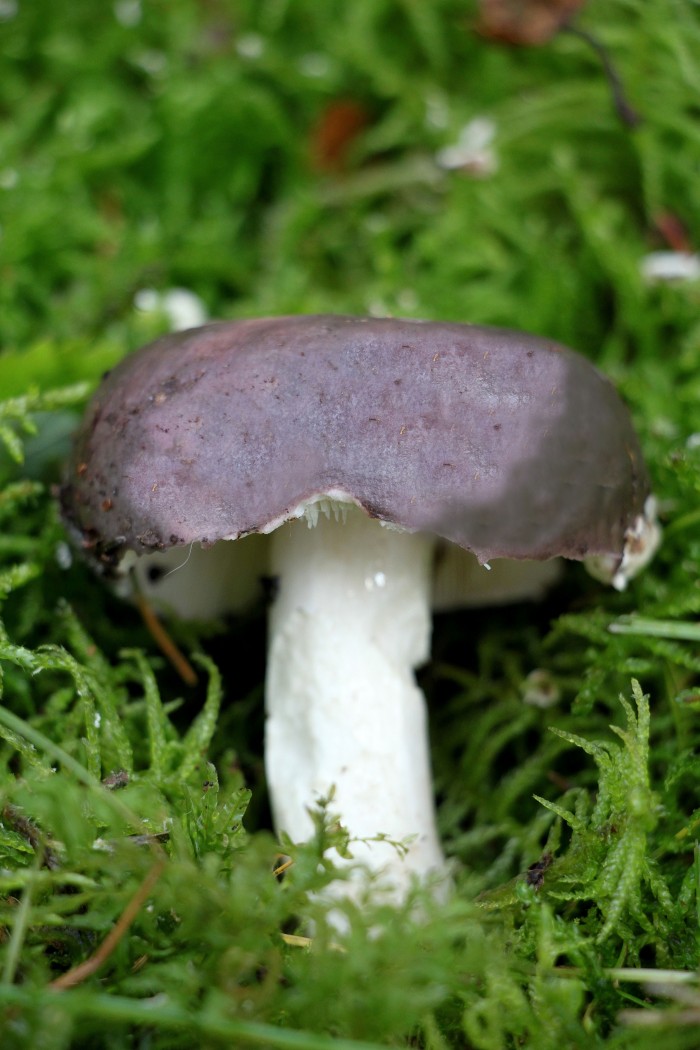
A kékhátú galambgomba – az őrségben galambicaként ismert – nevével ellentétben gyakran nem kék, hanem inkább ibolyás vagy zöldes színű kalappal rendelkezik. Színe fiatalon inkább szürke, később kékeslilára, illetve galambszínűre változik. A tönkje zömök, vastag. Lomberdők talaján egyesével, sokszor nagy mennyiségben terem a fák alatt, nyáron és kora ősszel. A galambgombák kellemes, de nem erős ízű gombák. Felhasználásuk változatos. Sütve, főzve, pirítva, párolva, grillezve is finomak. Száríthatók, tartósíthatók olajban, más zsiradékban és savanyúságként is.
The russula cyanoxantha – or galambica, as it is called in the Őrség region – is often not blue, as its name suggests, but has a violetish or greenish cap. When young, its colour is more of a grey hue which later turns into blueish purple and dove grey. The stipe is stubby and thick. lt grows solitary on the ground of deciduous forests, and often in large numbers under the trees in the summer and early autumn. Russula mushrooms have a pleasant, although not very intensive flavour. They can be used in various ways and are excellent when fried, cooked, sautéed or grilled. They can be dried and preserved in oil or in other fats and also in a pickled form.
A fenyőalja gomba vagy más néven ízletes rizike közepes termetű, rendszerint erdeifenyők körül, ősszel tenyésző gomba. Kalapja kezdetben begöngyölt szélű, közepe bemélyedő, majd szétterül. Színében egyaránt megtalálható a zöld és a narancssárga. Lemezei sűrűn állók, élénk narancsvörös színűek. Tönkje rövid, zömök, színe a kalapéval megegyező. Húsa szintén narancssárga, megtörve tejnedvet enged, amely a levegővel érintkezve megzöldül. Zamata fűszeres, a frissen szedett termésből serpenyőben vagy sütőben zsíron megsütve, fokhagymával, tejföllel vagy sajttal ízesítve kitűnőfogás készíthető.
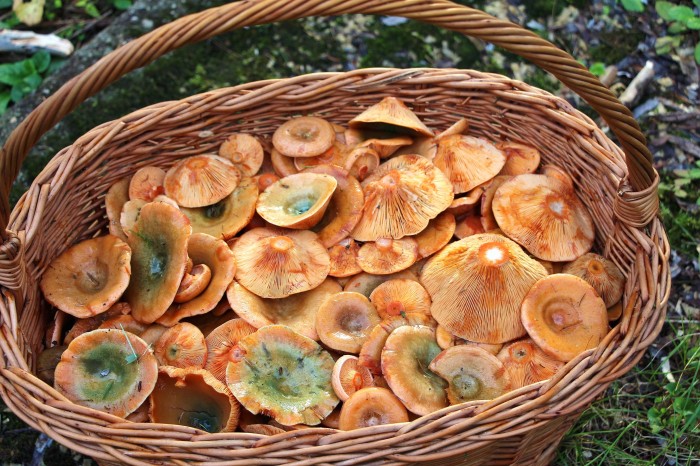
The pine mushroom (lactarius deliciosus) or saffron milk cap is of a medium sized mushroom normally growing around pine trees in the autumn. The cap is rolled inwards when young, with the middle sitting deeper, then it spreads out flat. Regarding its colour, it can be both green and orange. The gills are densely arranged and bright orange coloured. The stipe is short, thick, its colour is the same as that of the cap. The flesh is also orange-coloured, exuding a milky liquid when broken, and this liquid is turning green when contacting with air. lt has a spicy flavour and aroma, and an excellent dish can be made by frying the freshly picked mushrooms in oil in a pan or in the oven, flavoured with garlic, sour cream or








